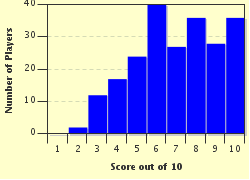Quiz Answer Key and Fun Facts
1. Diets high in sugar and carbohydrates lead to a sharp rise in blood glucose. What term is given to such high blood glucose levels?
2. The pancreas is the primary organ involved in detecting this high blood glucose and releases insulin in response. From what specific cells is insulin released?
3. There are several effects of insulin on glucose metabolism. Firstly, it causes cells in the liver and muscle to produce more enzymes that are involved in breaking glucose down into a molecule called pyruvate, which in turn releases energy. What is this process called?
4. Another way in which insulin attempts to lower blood glucose levels is by stimulating liver cells to convert this circulating glucose into so called "animal starch". What name is more commonly used for this storage material?
5. A third way in which insulin reduces blood sugar levels is to activate GLUT4 proteins in muscle cells. What specific role do GLUT4 proteins play?
6. Since insulin plays such a pivotal role in reducing blood glucose, it is unsurprising that problems arise when tissues such as the liver develop insulin resistance. What does the term "insulin resistance" refer to?
7. Insulin resistance often results in the pancreas trying to compensate by producing more insulin. This induces stress, damage to, and eventually death of the insulin cells. What is the name for this disorder?
8. Low blood glucose is also problematic for the body, since this can induce comas. The pancreas again senses the low blood glucose levels and responds accordingly. What is the normal physiological response of the pancreas to low blood glucose?
9. In times of particularly low blood glucose, the cell may synthesise glucose from non-carbohydrate sources such as lactate or amino acids. What is this process known as?
10. Fat stores are plentiful in most humans. They provide more energy per gram than glucose and can be used in times of starvation. Why then, do our bodies still try and maximise the amount of glucose available to us?
Source: Author
doublemm
This quiz was reviewed by FunTrivia editor
WesleyCrusher before going online.
Any errors found in FunTrivia content are routinely corrected through our feedback system.

